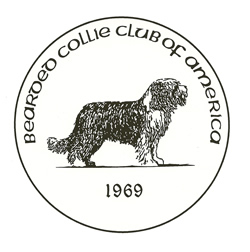“How can the judge pick a winner when all the dogs look alike?” That’s a question heard at ringside particularly when the entries all sport the same color coats. Another familiar phrase, “Why did the judge put up that dog when the one in front of him has better tail carriage?” (or better ear set or better topline or better muzzle or… ). Ever since the advent of judging, ringsiders and exhibitors have wondered what thought processes course through a judge’s mind when selecting winners. The catch is that The Perfect Dog has yet to be produced so it’s up to the judge to weigh virtues and faults on each entry. To further complicate matters, many judges consider some faults as ‘unforgivable,’ no matter how excellent the rest of the dog might be. You might have heard them referred to as ‘tooth fairies’ or ‘head hunters.’
You’re going to be the judge today, so let’s start with the standard — the description of the ideal adult dog of your breed. Some standards are very detailed while others are less informative than the average postage stamp. Some standards grade faults as ‘minor’ or ‘major’. The Beardie standard lets the judge decide. A judge should be well acquainted with the standard and it’s no disgrace to have a copy at hand in case some question pops to mind.
Your assignment (should you choose to accept it) is the Open Bitch class which is populated by three very respectable Beardie girls. The first is a striking black with typical white markings. She has dark brown eyes, a scissors bite, plus a balanced muzzle and skull. The chest is a bit narrow but of good depth. There’s a slight dip to the topline. On the move, she raises her front paws higher than necessary but her rear is well angulated and supplies lots of drive. She backs off a bit when you first approach her but then allows you to go over her without protesting. Her coat is shiny and on the coarse side.
Next in line is a pretty blue bitch whose tail starts happily wagging as you approach her. She’s strongly built but decidedly feminine. Her gray eyes tone nicely with her coat and they’re set well apart, giving her a joyous expression. There are a few places on her lips where the pigmentation is not complete. Her bite is a scissors. Her coat is thick and a little silky. On the move, her paws seem to skim the ground and she covers the maximum amount of ground with effortless movement. Her topline is level and she carries her tail somewhat higher than her topline.
An attractive brown girl rounds out the trio. She is the smallest of the three at 19 inches. Her expressive ears are set level with her milk chocolate eyes. Her head is well balanced with the muzzle and skull equal in length. As you check the bite you notice one of her molars is missing. The depth of her chest descends to her elbow and is of a hand’s width. Her topline shows a slight rise over the loin. As you walk up to examine her, she assumes a show stack and holds it while you go over her, her eyes focused on her handler (and the bait). As she gaits, her rear assembly shows exceptional drive while her front paws flip upward. Her flowing red-brown coat swirls around her legs as she moves. She carries her tail low with an upward tip at the end.
So there’s your entry. How will you place them? What criteria will you use to make your selection? The late, great Anne Rogers Clark remarked she looked at type first because without type, you don’t have a breed. Other judges question whether the dog is constructed to do the job for which it was bred. Of course your Beardie may never come closer to sheep than your wool slacks but would it be capable if faced with a formidable flock?
Newcomers to judging might find themselves trying to balance virtues and faults. Does the correct coat carry more value than a well-balanced head? Is a walleye considered more of a fault than a level bite?
Rather than picking an entry apart feature by feature, you might find it more rewarding to judge the dog as a whole entity. Do all the parts fit together correctly? Balance is a key word here. To some judges, certain features carry more weight in their estimation than others. Many, many years ago another exhibitor and I dueled for wins with our bitches. One day, Barb commented that her dog was absolutely going to defeat my girl. She had a brief conversation with the judge who was assigned to our breed in the upcoming show. “Is this the Beardie you’re showing now?” he questioned. “ She has superb rear end angulation. She’s bound to do well.” So Barb was brimming with great expectations for the upcoming show. It came as a shock to her when the judge awarded WB to my girl, leaving Barb holding the reserve ribbon. Before leaving the ring, Barb confronted the judge. Waving the RWB ribbon, she whined, “I thought you really liked her. You said she has excellent rear end angulation!”
“Oh, she does, “ the judge answered, “but the other one has a much better front.”
As a judge, how will you decide what attributes are most important? What will you forgive and what will you award? Based on the descriptions of those three bitches, how would you place them? Don’t bother to ask me. After all, you’re the judge!
— alice bixler, Bearded Collie Club of America, alice@bedlamkennels.com.




